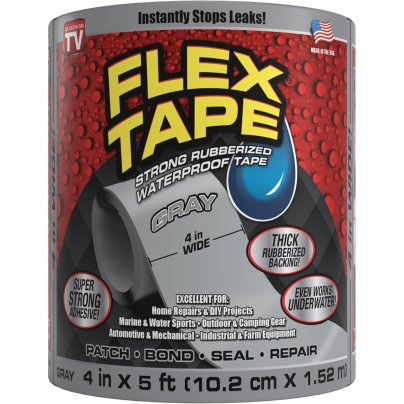

We may earn revenue from the products available on this page and participate in affiliate programs. Learn More ›
Rating: 4.7/5
Flex Tape is the kind of product you don’t believe works until you try it yourself. It’s cheap, it’s sticky—unbelievably sticky—and it somehow seals leaks and holes like magic. I drilled holes in jugs, wrapped leaky hoses, patched a low-slope roof, and basically dared the little roll of Flex Tape to fail. Spoiler: it didn’t.
Is Flex Tape Really That Sticky?
Yes. The moment you peel the backing off, the thick adhesive grabs onto everything—including your fingers if you’re not careful. It takes a firm pull just to get the liner off, and once the sticky side touches a surface, it’s not going anywhere.
Aside from being a nightmare if it brushes against your hair (don’t ask me how I know), applying it is straightforward. Cut off a strip, peel back the liner, slap it on, smooth it out—and that’s it. Flex Tape even seals if the surface is wet.
It’s not designed for pretty, cosmetic repairs—it’s a thick, rubberized patch meant to stop leaks and fill gaps. For $15 a roll, it’s a fast, reliable fix that outperforms most sealants and patches I’ve used in the past. But don’t think of it as temporary: once you put it on, it’s staying put.
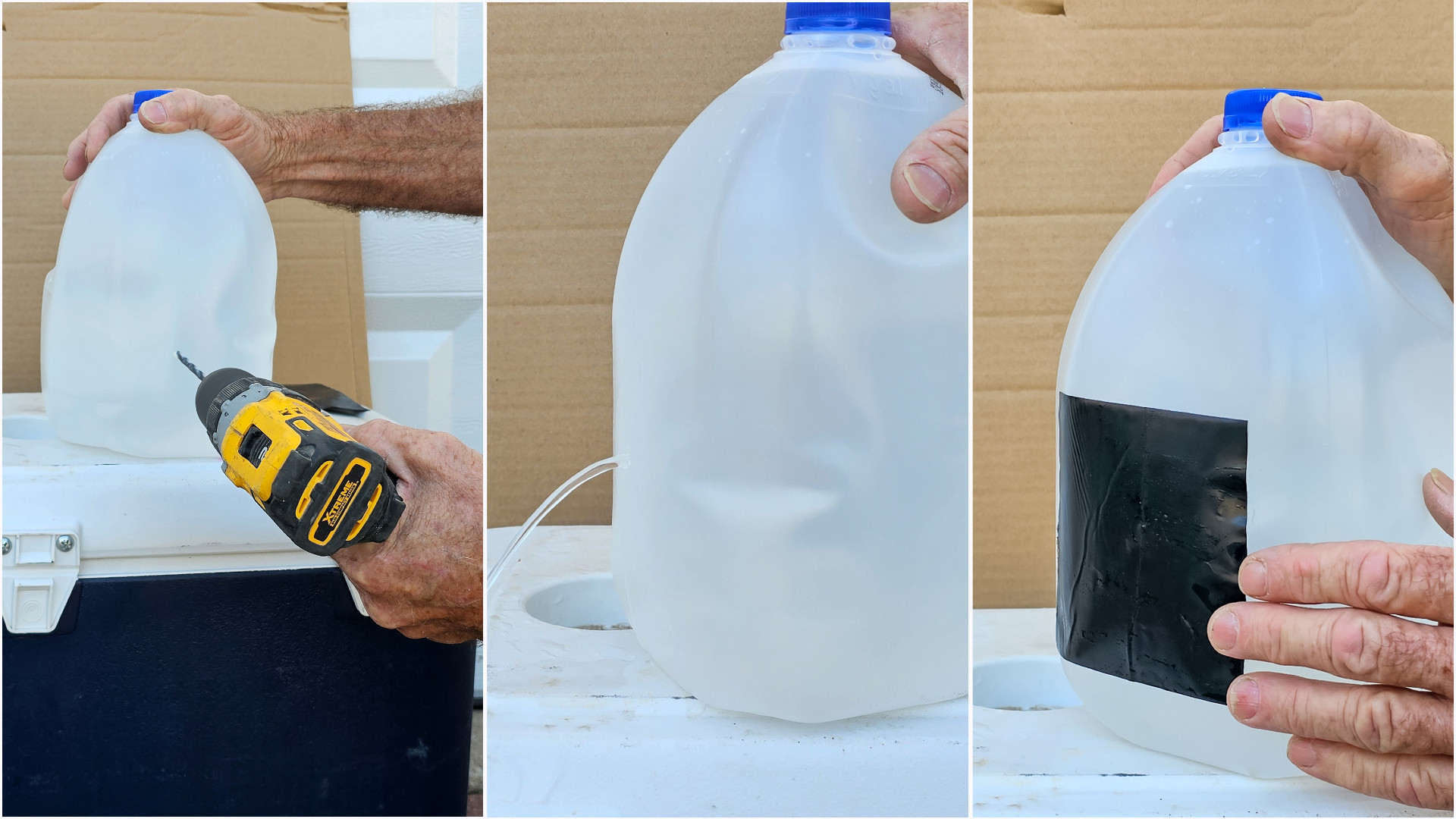
Does it Actually Stop Leaks?
Absolutely. I slapped a strip over a gushing hole in a water jug, and it sealed instantly. I tried it again on a dripping downspout, a cracked pipe, and even TPO flat roofing. Each time, it created a tight, waterproof seal.
What impressed me most was its versatility—whether the surface was smooth like glass or textured like concrete, the adhesive molded itself into place just by smoothing it with my fingers. On the hose test, the water pressure kept pushing against the patch, but the tape didn’t budge. It bonded immediately and held firm.

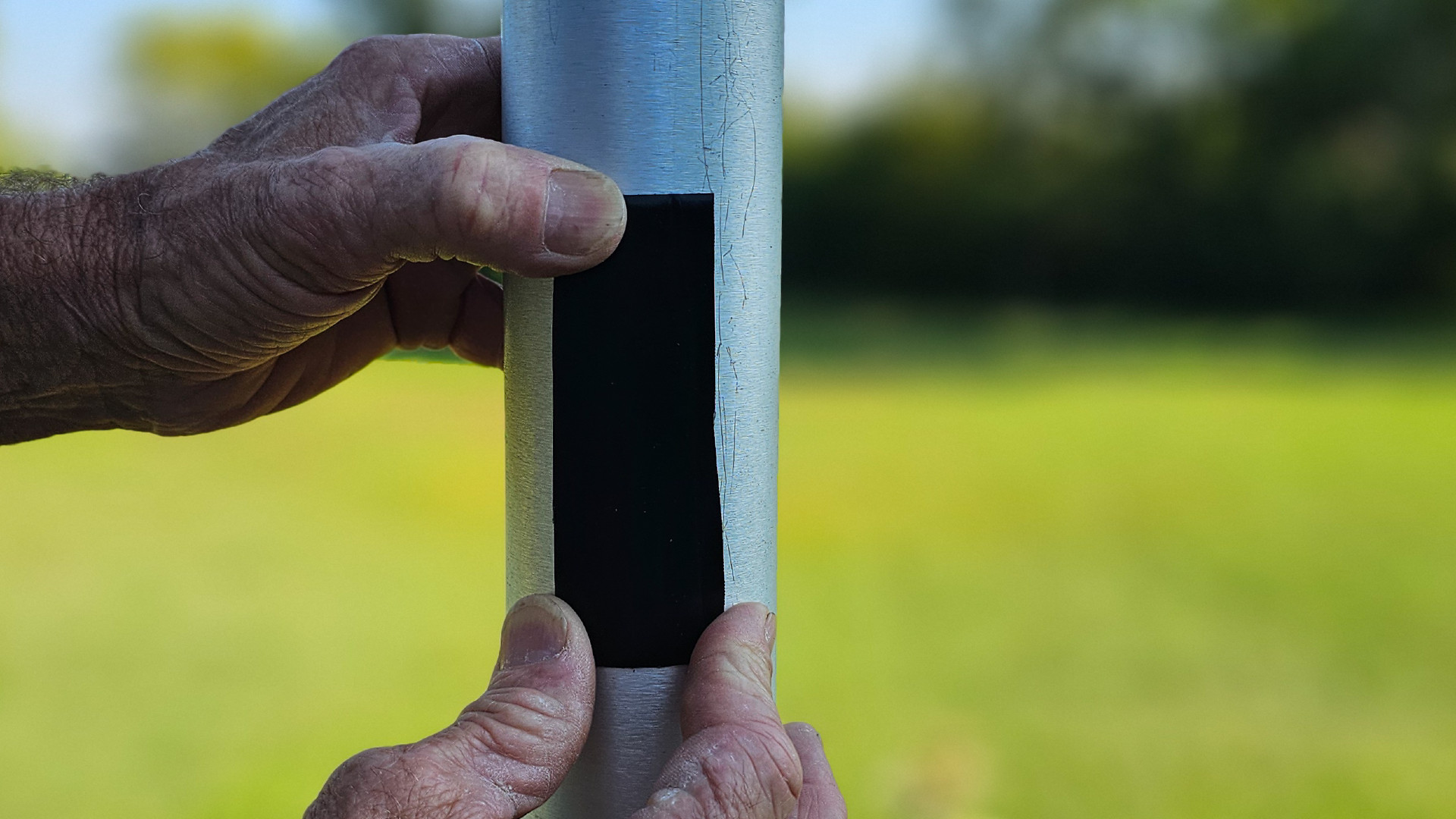
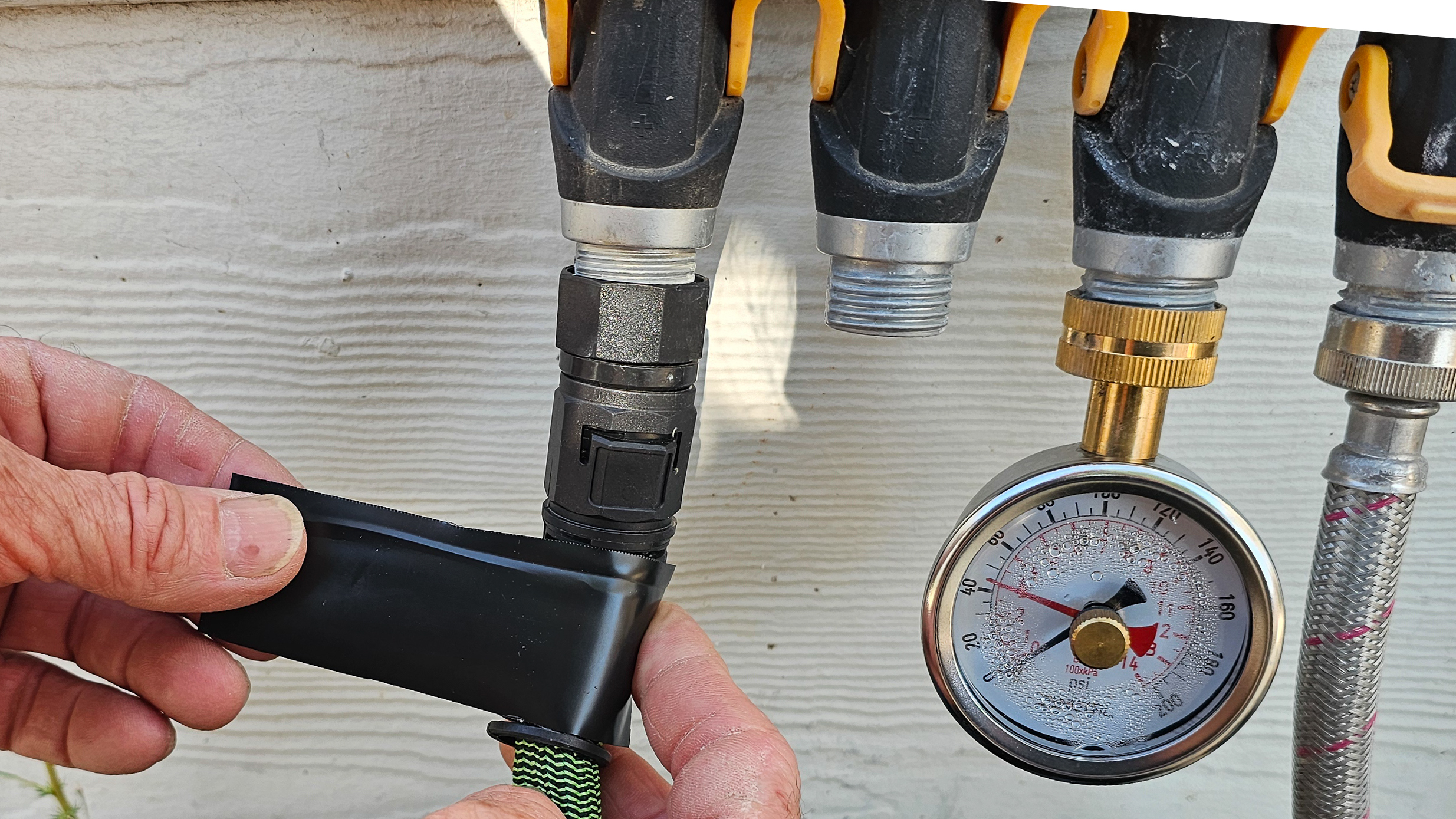
Where Can You Use It?
The manufacturer claims it sticks to PVC, metal, tile, glass, stucco, and even fabric, and after testing it myself, I believe it. Honestly, the challenge isn’t getting it to stick—it’s keeping it from sticking to something you didn’t mean to. Take your time applying it, because once it’s on, it’s not easy to remove. (As for how to remove Flex Tape, Flex Seal recommends its own Flex Adhesive Remover.)
You could patch a crack in a concrete wall, seal a leaky aluminum gutter, or stop air from whistling through a drafty window frame. Because it bonds to virtually everything from porcelain to vinyl, it’s just as useful for quick indoor fixes as it is for outdoor repairs.
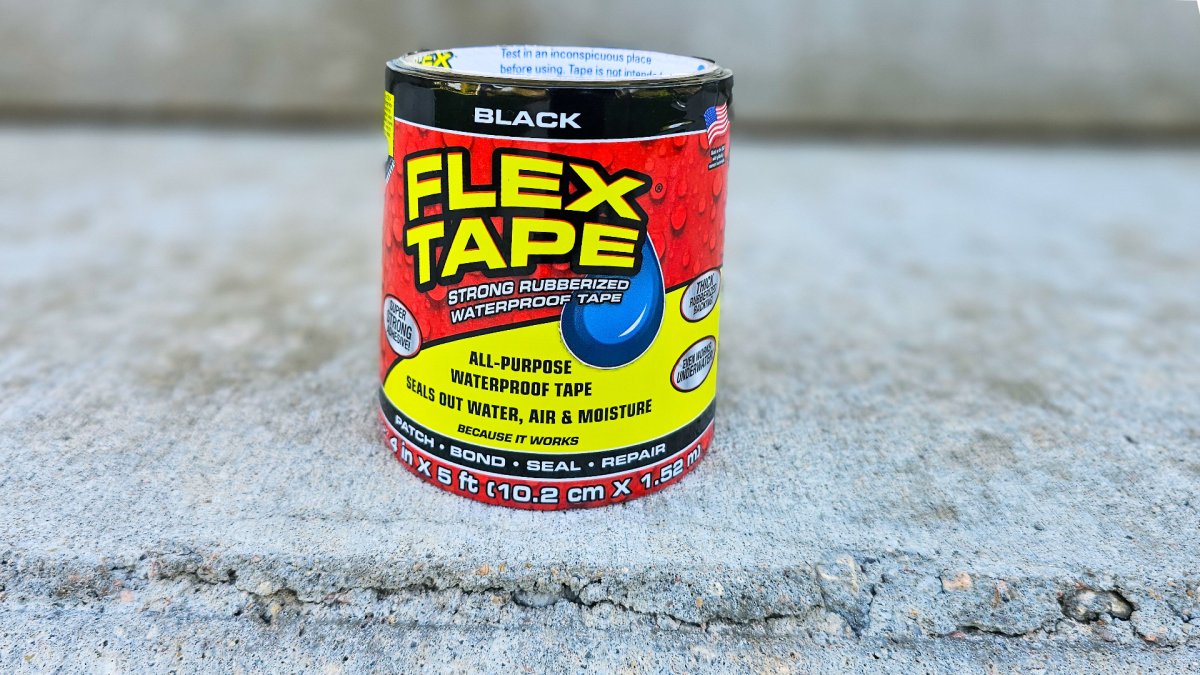
Bottom Line
If you’re a DIYer, renter, homeowner, or just someone who hates waiting around for a plumber, Flex Tape is worth tossing in your toolbox. It’s fast, sticky, and works on just about anything you can throw at it. I tested the black version, which stood out on lighter surfaces, but you can also grab it in white, gray, or clear if you’d rather have your patch blend in.
That said, this isn’t for anyone looking for a subtle, long-term repair. It’s thick, rubbery, and not exactly pretty. But when you’ve got water spurting, air leaking, or a crack begging to be sealed, in my experience, nothing this inexpensive comes close to working as quickly or as well as Flex Tape.
